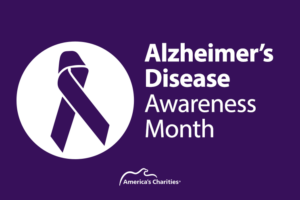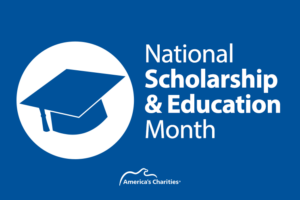Steve Delfin | December 15, 2015
Six Tips for Charitable Giving During the Holiday (or any) Season
According to Network for Good, nearly 30 percent of all charitable giving occurs during the month of December. Quite predictably newspapers, magazines, and other outlets churn out their annual tips for giving to charity. Some produce “good charities-bad charities” lists. Others point people to charity watchdog groups. Many continue to perpetuate myths about what amounts to a “good” or “bad” charity such as “overhead” costs. In short, there is a lot of confusion. So how do you know where to start? Here are America’s Charities’ six steps for giving during the holiday (or any) season:
1. Check for authenticity.
The best resource for this is GuideStar. A big green checkmark means the organization is legally registered with the IRS and is considered legitimate in the eyes of the law.
2. Take the time and talk to the charities you are considering supporting.
Not many people take this step for fear that nonprofits won’t take no for an answer or will stalk the donor. Alternatively see if the nonprofit has completed their Charting Impact report. Charting Impact is essentially the gold level of GuideStar, which encourages charities to articulate their strategy for achieving impact by responding to five basic questions. Their response to those questions creates a unique, concise profile that appears on GuideStar.
3. Consider how you want to give.
Giving directly online or via check is fine, but generally results in smaller contributions. No matter what method you choose, after you do your research and are comfortable with the charity(s) you are going to support, consider making a commitment to a reoccurring gift. Charities need that reoccurring sustainable support to be able to plan and achieve their goals. Second, consider workplace payroll deduction giving if your employer provides that. Tied to your regular paycheck, workplace giving is convenient and generally results in much larger contributions as you can give a little out of each paycheck. At the end of the year, you’ll find that you were able to provide a larger gift than one-time giving – and have that much more impact on the world. Third, and most importantly, take the time to research the charities you are considering supporting. Become an informed, educated donor responsible for ensuring your contributions are having meaningful impact.
4. Look for transparency, accountability and evidence of impact.
On their websites, charities should make the following information easily accessible: their mission statement, financials including their annual IRS Form 990, and donor privacy policy. Also, charities should provide information about who their governing representatives are (Board of Directors). Finally, donors should be able to clearly understand exactly what a charity does – the outcomes and impact they seek to achieve – via the organization’s website.
5. Focus on data that matters: progress, not overhead.
Overhead is not a proxy for efficiency or effectiveness. The BBB Wise Giving Alliance, GuideStar and Charity Navigator along with other organizations like America’s Charities are working collaboratively to counter the false conception that financial ratios are the sole indicator of nonprofit performance. This collaboration is called The Overhead Myth and resources and tools for donors and charities can be found at The Overhead Myth website.
6. Use the donor-centric tools and resources available to you to become educated and informed.
You wouldn’t buy a car without checking prices and other comparable data on Edmunds.com, Autobuyer.com or Consumer Reports. You use probably Yelp to find customer reviews on restaurants. So why not apply the same to rigor to the charities you support? There are a host of legitimate online resources available to help you research charities. Like with any consumer choice, there is no one single source that will provide you with the full-range of information you may need. However, here are those that we believe can help you become a more informed donors:
- America’s Charities (www.charities.org). We represent a highly diverse, pre-vetted group of 140 national, international and local charities that make a significant impact in the world each and every day. Donors can have confidence that every America’s Charities member meets stringent standards of accountability and transparency.
- BBB Wise Giving Alliance (www.give.org). The BBB Wise Giving Alliance helps donors make informed giving decisions by producing reports about national charities, evaluating them against comprehensive Standards for Charity Accountability.
- GuideStar (www.guidestar.org). GuideStar gathers and disseminates data about IRS-registered nonprofits including a nonprofit’s mission, legitimacy, impact, reputation, finances, programs, transparency, and governance.
- GreatNonprofits (www.greatnonprofits.org). Essentially a Yelp for nonprofits, GreatNonprofits provides donor- and community-sourced reviews of charities.
- Charity Navigator (www.charitynavigator.org). While their charity rating methodology has, over the years, focused primarily on financial information, they have begun focusing on more relevant information, like impact, when rating charities. Keep in mind that there are many charities who have not yet been rated.
Giving to charity is a social investment. Donors should take some time to ensure they are helping generate a strong social return on that investment.
Steve Delfin
|
Recommended Reading:

Get Resources and Insights Straight To Your Inbox
Explore More Articles
Open Position: Customer Service Coordinator (Remote-Part Time)
Position Title: Customer Service Coordinator (Remote – Part Time) Department: Charitable Funds Management Solutions We are a non-profit charitable organization looking for skilled individuals who…
Read ArticleGet Resources and Insights Straight To Your Inbox
Receive our monthly/bi-monthly newsletter filled with information about causes, nonprofit impact, and topics important for corporate social responsibility and employee engagement professionals, including disaster response, workplace giving, matching gifts, employee assistance funds, volunteering, scholarship award program management, grantmaking, and other philanthropic initiatives.


 Steve has over 30 years of experience working in and with major national and international not-for-profit organizations and socially-responsible international corporations, including a long history of engagement with and leadership around workplace giving and employee volunteerism programs.
Steve has over 30 years of experience working in and with major national and international not-for-profit organizations and socially-responsible international corporations, including a long history of engagement with and leadership around workplace giving and employee volunteerism programs.

